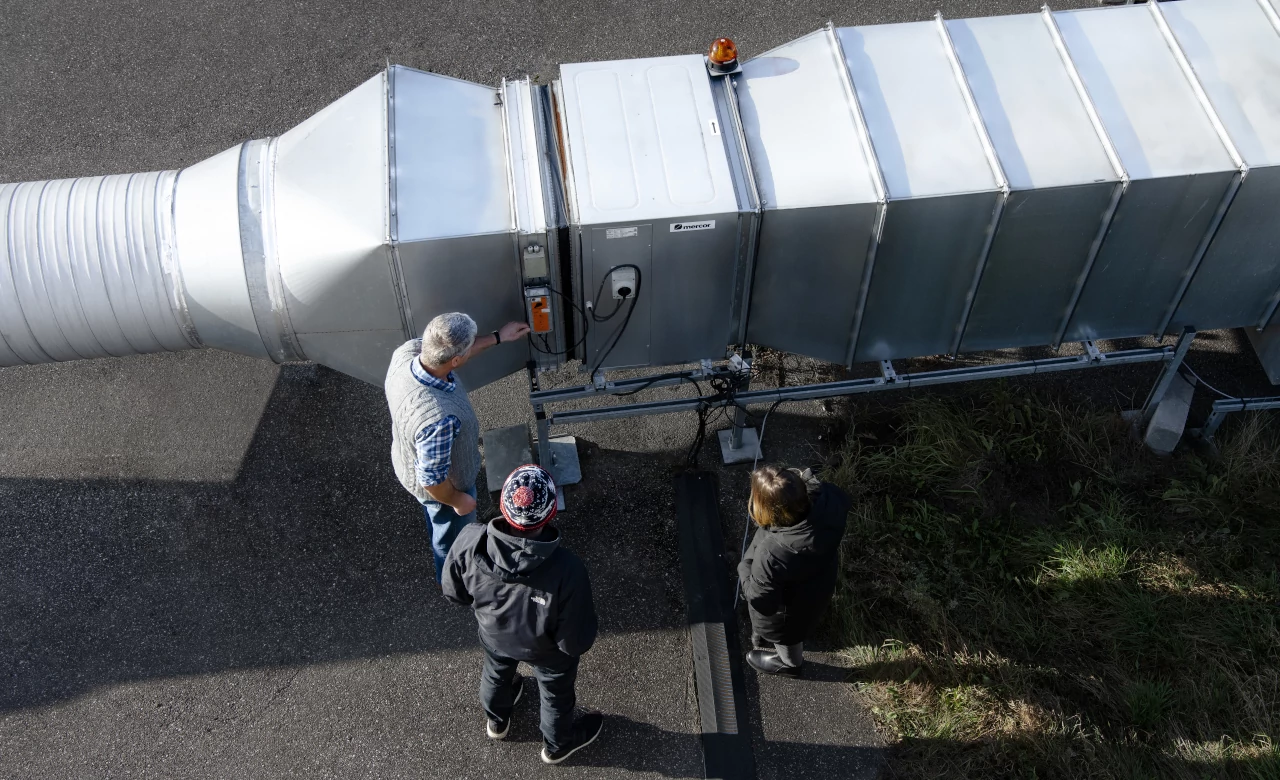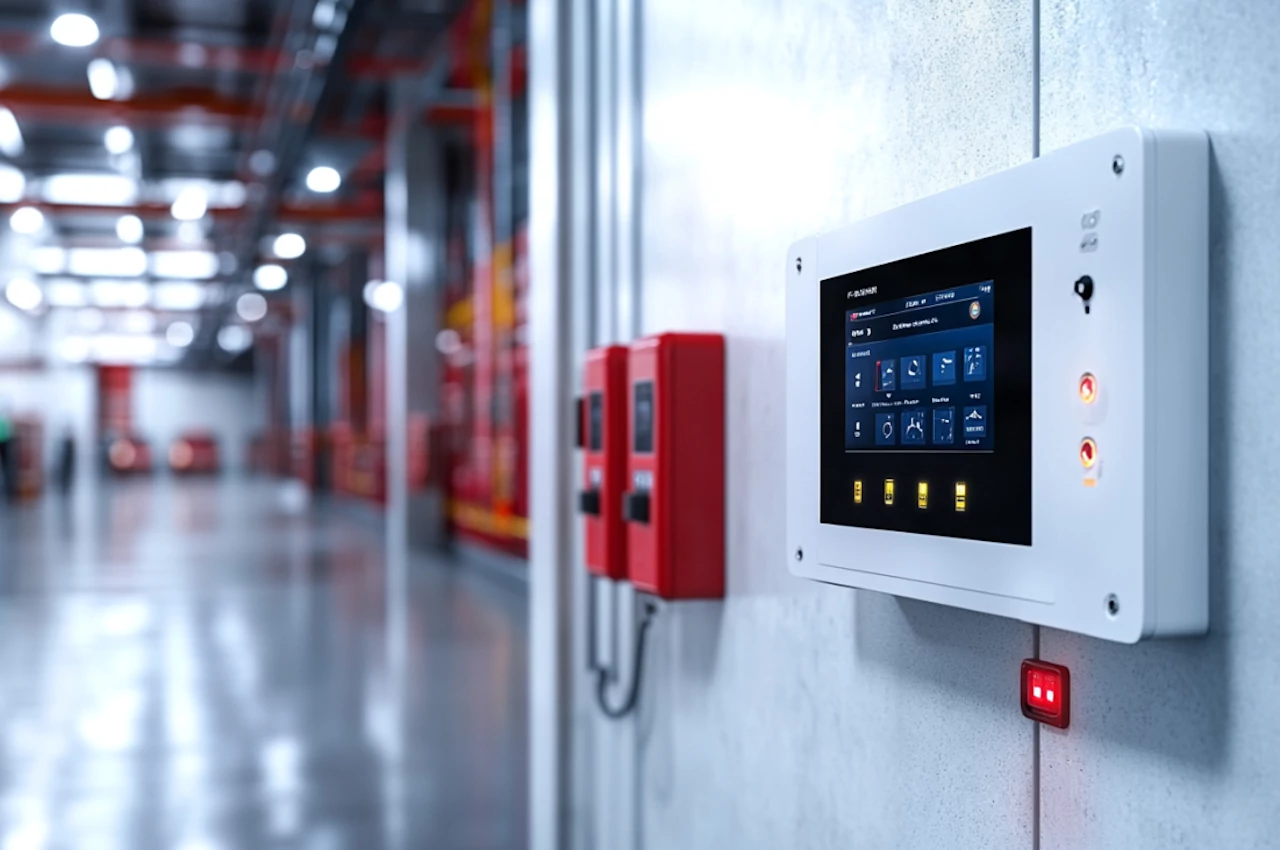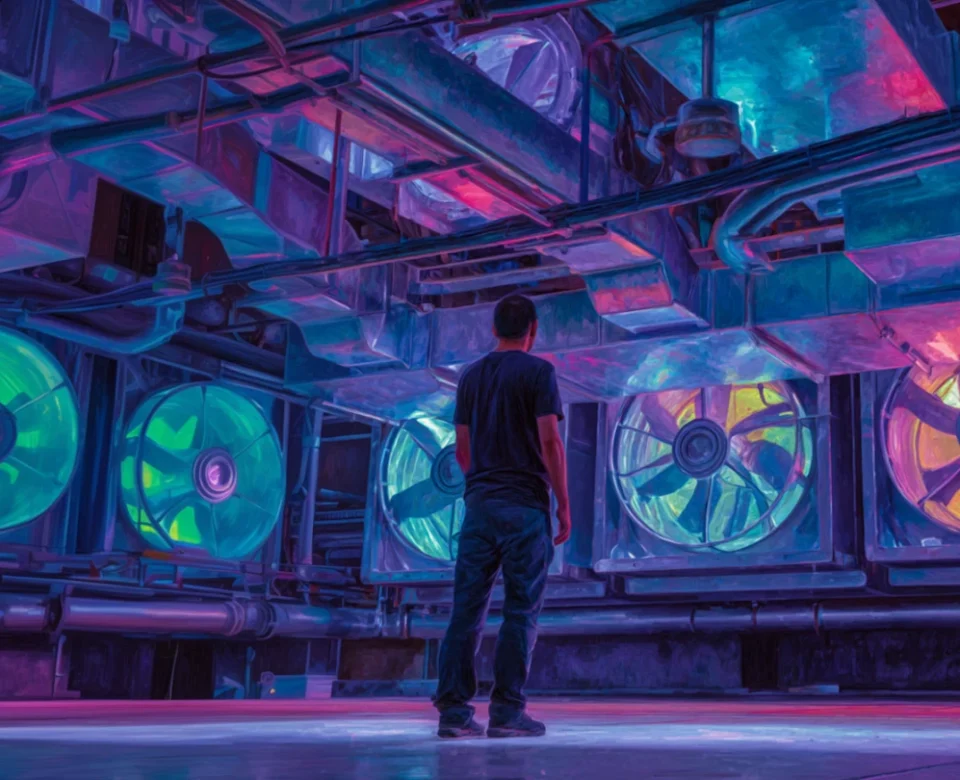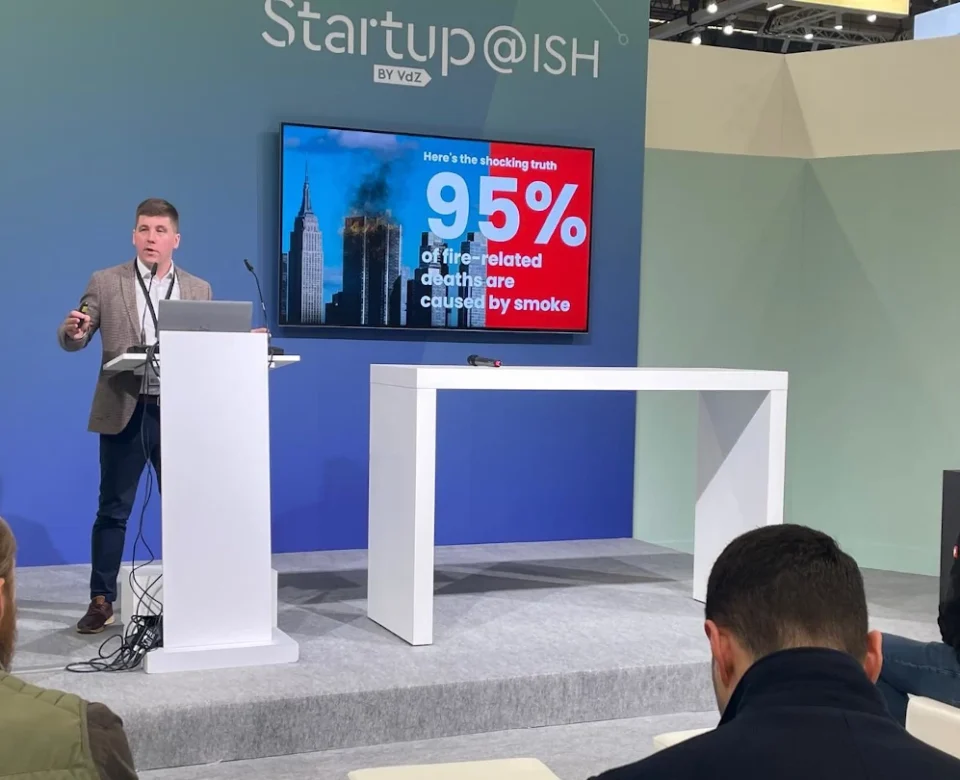
We are at FeuerTrutz 2023
2023-08-26
Another training on stairwell pressurisation
2023-08-27Have you ever wondered how rapidly evolving technology is changing our approach to fire safety? The world of fire protection is experiencing a significant shift, thanks to groundbreaking advancements in fire alarm systems. These innovations are not just enhancing the safety of buildings but are also making fire detection more reliable, efficient, and responsive than ever before. In this article, we’ll take a closer look at how these developments are transforming fire safety and why they are so crucial for modern building management.
What you will learn:
- All about advancements in fire alarm technology
- Impact on enhancing fire safety and building protection

A promising outlook for fire safety
The future of fire safety is looking brighter than ever, largely due to substantial improvements in fire alarm technology. New developments, such as advanced sensors, wireless communication systems, and artificial intelligence, are allowing fire alarms to detect fires with greater accuracy and speed.
These advancements are particularly important because they can dramatically reduce the time it takes to detect a fire, leading to quicker evacuations and less damage to property. By embracing these technologies, we are not only safeguarding lives, but also enhancing the overall resilience of buildings in the face of potential fire hazards.
The growing importance of system integration
Moreover, we are seeing an increasing trend towards integrating fire alarm systems with other critical safety and building management systems.
This integration is a game-changer, as it enables seamless communication between fire alarms and other safety features such as fire suppression systems, emergency lighting, and access control mechanisms. Such interconnected systems can coordinate responses more effectively, ensuring that every aspect of a building's safety infrastructure works together in harmony during an emergency.
What is a fire alarm system?
A fire alarm system is an essential network of devices designed to detect and alert occupants to the presence of fire or smoke within a building or any enclosed space. These systems have long been a cornerstone of building safety, providing the first line of defense against the destructive potential of fire.
In the past, fire alarm systems typically relied on relatively basic detectors, such as smoke detectors and heat sensors, which would trigger alarms to alert building occupants. While these older systems have saved countless lives, they were not without their flaws. False alarms were common, and the sensitivity of the detectors often varied, leading to inconsistencies in detection.
Technological transformations in fire detection
However, the landscape of fire alarm technology has been transformed by recent technological advancements.
The introduction of sophisticated wireless systems and the integration of artificial intelligence have revolutionized how these systems operate.
These new technologies offer a level of precision and reliability that was previously unattainable, significantly enhancing the ability of fire alarm systems to detect real fires while minimizing the risk of false alarms.
This progress means that modern fire alarm systems can provide earlier warnings, giving occupants more time to evacuate and reducing the likelihood of severe damage, starting for example pressurization systems.

Exploring different types of fire alarm systems
Fire alarm systems come in a variety of types, each tailored to meet specific safety needs and building requirements. Understanding the differences between these systems is crucial for selecting the right one for a particular environment:
Conventional fire alarm systems:
Conventional fire alarm systems are among the most traditional and widely used. These systems divide a building into different zones, each with its own circuit connected to a central control panel. When a detector in one of the zones is triggered, the control panel identifies the affected zone and sounds the alarm. While these systems are cost-effective and reliable for smaller buildings, their ability to pinpoint the exact location of a fire is limited, as they only indicate the general area where the alarm was activated.Addressable fire alarm systems:
Addressable fire alarm systems represent a more advanced approach to fire detection. In these systems, each detector and device has a unique address, allowing the control panel to identify the precise location of the fire. This feature is particularly valuable in larger buildings where a swift and targeted response is critical. By knowing exactly where the fire is located, emergency responders can act more quickly and efficiently, potentially saving lives and reducing property damage.Wireless fire alarm systems:
Wireless fire alarm systems are gaining popularity due to their ease of installation and flexibility. These systems eliminate the need for extensive wiring by using wireless sensors that communicate with a central control panel. This makes them ideal for retrofitting older buildings, where installing new wiring might be challenging or impractical. Additionally, wireless systems are perfect for temporary structures or areas where traditional wired systems are not feasible.Hybrid fire alarm systems:
Hybrid fire alarm systems combine the best features of both conventional and addressable systems. They offer the flexibility of wireless systems with the precision of addressable technology, making them suitable for a wide range of building types and sizes. Hybrid systems are often chosen for their ability to provide robust fire detection capabilities while remaining cost-effective and adaptable to different building layouts.Voice evacuation systems:
Voice evacuation systems add an extra layer of safety by providing clear and direct instructions to occupants during an emergency. Instead of relying solely on audible alarms, these systems use pre-recorded or live voice messages to guide people to safety. This is especially important in large or complex buildings, where traditional alarms might not be sufficient to communicate the necessary information quickly. In noisy environments or where there is a risk of panic, voice evacuation systems help ensure that everyone knows what to do and where to go.Aspirating smoke detection systems:
Aspirating smoke detection systems offer an innovative solution for areas with unique challenges, such as high ceilings or environments where traditional smoke detectors might not perform well. These systems use a network of pipes to draw air from the protected area into a central detection unit, where it is analyzed for smoke particles. This method provides extremely early detection, often before the smoke is even visible to the human eye, allowing for rapid response and minimizing potential damage.
Each type of fire alarm system has its own strengths and is designed to meet the specific needs of different building environments. The choice of system depends on various factors, including the building's size, layout, occupancy type, and the level of protection required.
Latest innovations in fire alarm technology
Recent advancements in fire alarm technology are pushing the boundaries of what these systems can achieve, making buildings safer and more resilient:
Integration with Building Management Systems (BMS):
One of the most significant advancements in fire alarm technology is the integration of these systems with Building Management Systems (BMS). This integration allows fire alarms to be part of a comprehensive safety and management network, where various building systems can communicate and work together during an emergency. For example, when a fire alarm is triggered, the BMS can automatically close fire-rated doors, shut down ventilation systems to prevent the spread of smoke, and activate emergency lighting. This coordinated response enhances overall safety and ensures that the building's infrastructure supports a swift and effective evacuation.Advanced detection technology:
The latest fire alarm systems are equipped with advanced detection technologies that go beyond the capabilities of traditional smoke and heat detectors. Video smoke detection systems, for instance, use cameras to detect the visual signature of smoke, providing an early warning before smoke levels rise significantly. Additionally, multi-criteria detectors combine inputs from smoke, heat, and carbon monoxide sensors, which not only improve detection accuracy but also reduce the likelihood of false alarms. These technologies allow fire alarms to respond more precisely to actual fire conditions, minimizing disruptions caused by false alarms.Remote monitoring and control:
The ability to monitor and control fire alarm systems remotely has revolutionized fire safety management. With remote access, building managers can oversee fire alarm systems from a central location, regardless of the building's size or complexity. This capability is particularly useful for large facilities or campuses with multiple buildings, as it allows for centralized monitoring and quicker response times. Remote monitoring also enables real-time diagnostics and maintenance, ensuring that fire alarm systems remain operational and effective at all times.Cloud-based fire alarm systems:
The adoption of cloud technology in fire alarm systems is transforming how these systems are managed and maintained. Cloud-based fire alarm systems store data in secure online servers, eliminating the need for on-site physical servers. This setup allows for real-time monitoring and analysis of fire alarm data from anywhere in the world, providing building owners and fire safety professionals with instant access to critical information. The cloud also facilitates easy updates and scalability, ensuring that the system can evolve as the building's needs change over time.Internet of Things (IoT) fire alarm systems:
The Internet of Things (IoT) is playing a pivotal role in the future of fire safety. IoT fire alarm systems utilize a network of interconnected sensors and devices that communicate with each other and with cloud-based platforms. This setup enables real-time data collection, analysis, and response, allowing fire alarms to operate more intelligently and efficiently. IoT systems can monitor a wide range of environmental factors, predict potential fire hazards, and even automate emergency responses, making them a powerful tool in modern fire safety management.
With these innovative technologies, fire alarm systems are becoming more sophisticated and capable of providing enhanced protection. As these advancements continue to evolve, they promise to make our buildings safer, more resilient, and better equipped to handle fire emergencies.
Conclusions regarding future fire safety
This article explores how advancements in fire alarm technology are transforming fire safety.
New innovations, like advanced sensors, wireless systems, and AI, are making fire detection faster and more accurate, potentially saving lives and reducing damage.
The integration of fire alarms with other building safety systems, such as fire suppression and pressurization systems, enhances overall safety.
The article also discusses different types of fire alarm systems, from conventional to IoT-based, and highlights the latest innovations, including remote monitoring, cloud-based systems, and advanced detection methods.
These developments are making buildings safer and more resilient in the face of fire emergencies.










